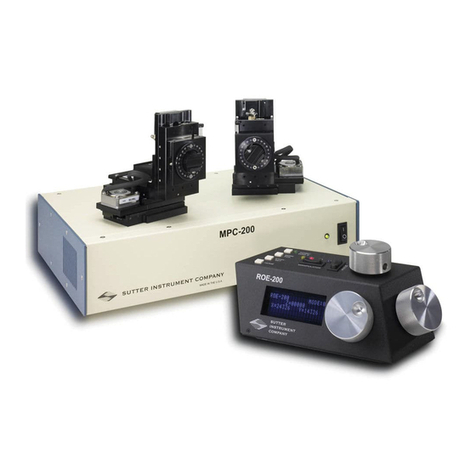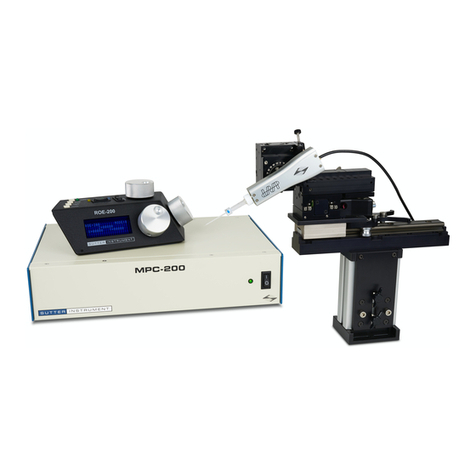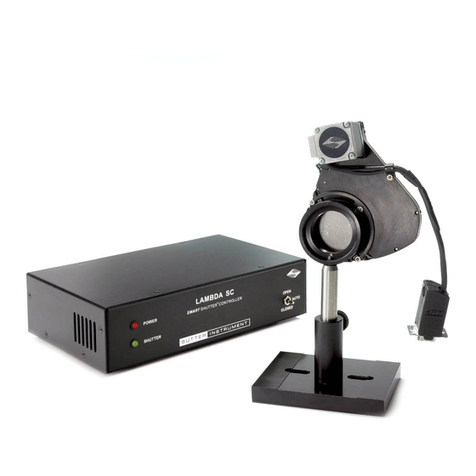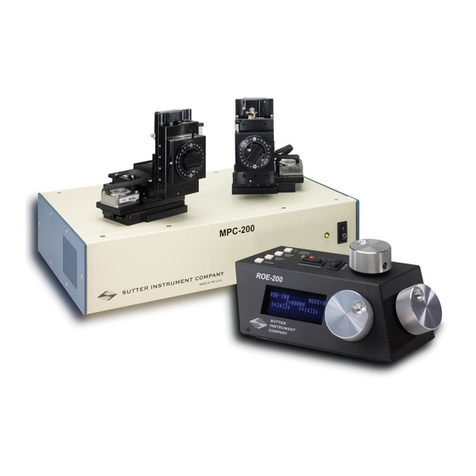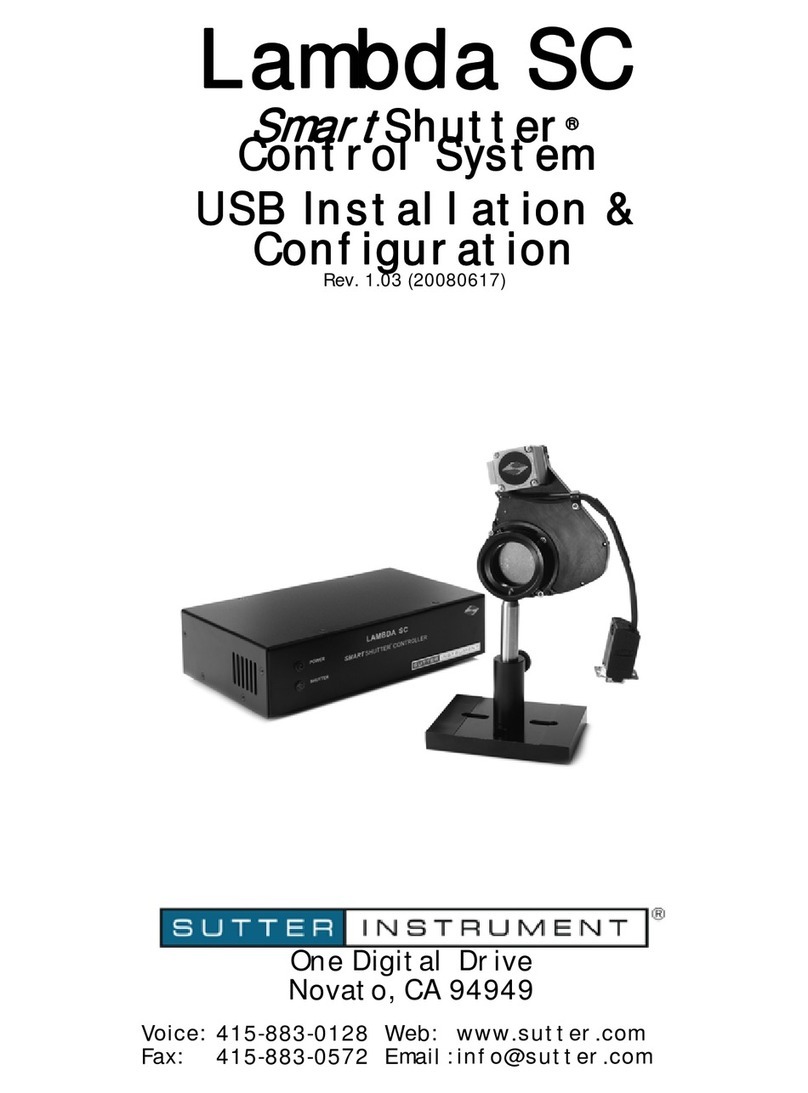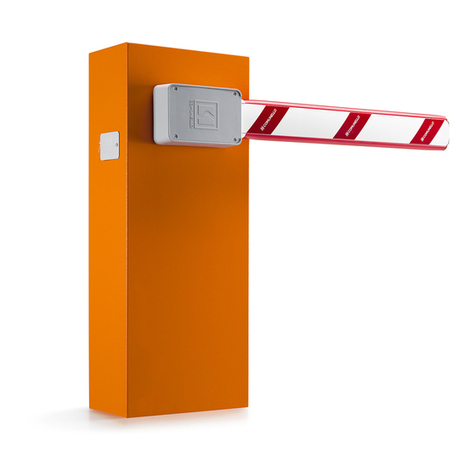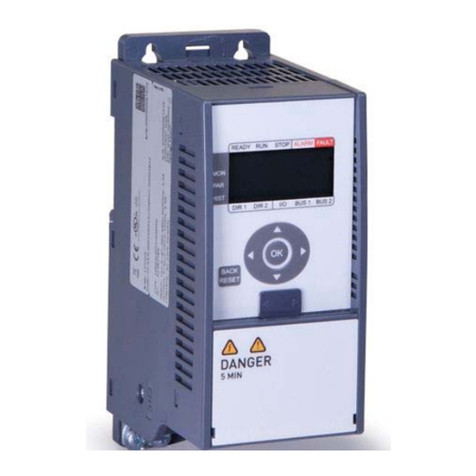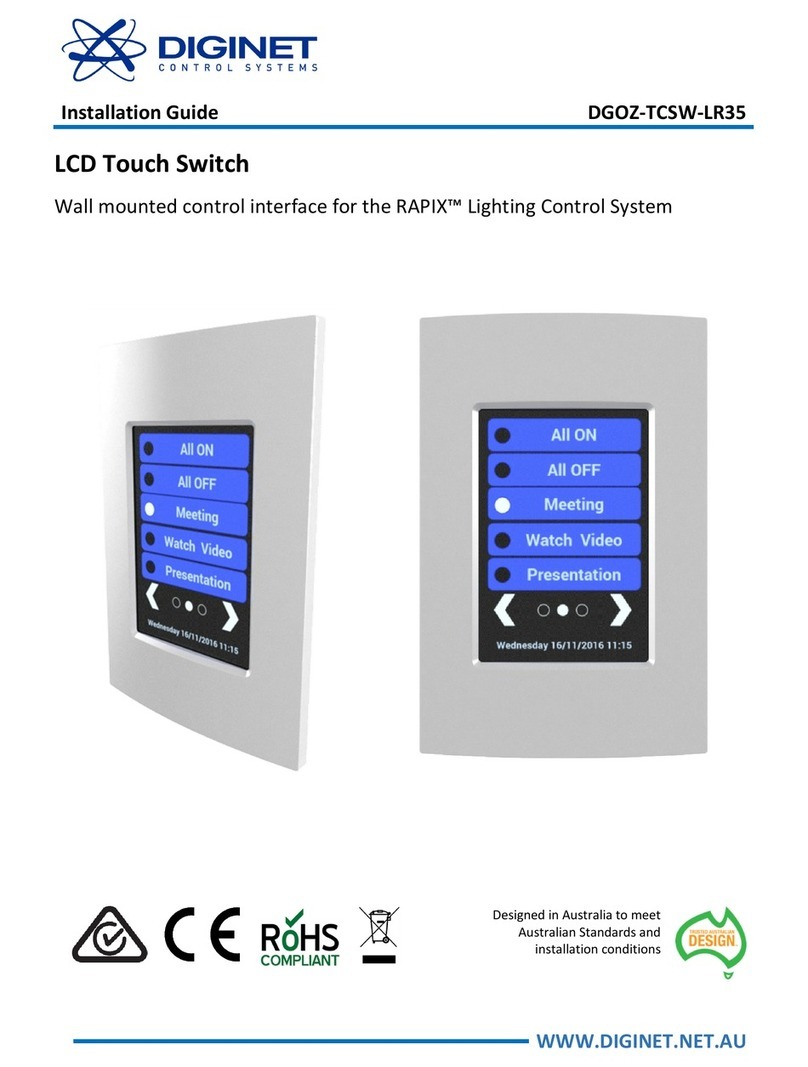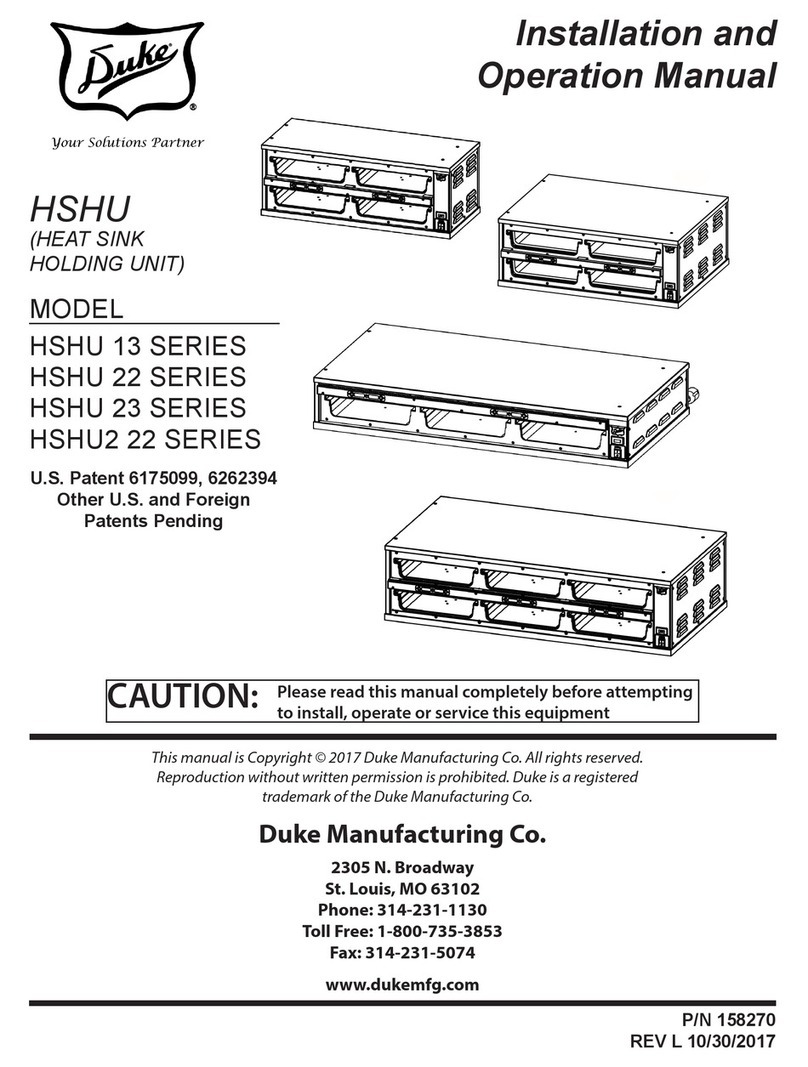
LAMBDA 10-2 OPERATION MANUAL – REV. 2.04 (20120224)
iii
ISCLAIMER
ISCLAIMERISCLAIMER
ISCLAIMER
The LAMB A 10
LAMB A 10 LAMB A 10
LAMB A 10-
--
-2
22
2 Optical Filter Changer system is designed for the specific use of
changing filters into and out of an optical pathway and no other use is recommended.
This instrument is designed for use in a laboratory environment. It is not intended for use,
nor should it be used, in human experimentation or applied to humans in any way. This is
not a medical device.
o not open or attempt to repair the instrument. Extreme heat and high voltages are
present and could cause injury.
o not allow unauthorized and/or untrained operative to use this device.
Any misuse will be the sole responsibility of the user/owner and Sutter Instrument Company
assumes no implied or inferred liability for direct or consequential damages from this
instrument if it is operated or used in any way other than for which it is designed.
SAFETY WARNINGS AN
SAFETY WARNINGS AN SAFETY WARNINGS AN
SAFETY WARNINGS AN PRECAUTIONS
PRECAUTIONSPRECAUTIONS
PRECAUTIONS
Electrical
ElectricalElectrical
Electrical
Operate the Lambda 10
Operate the Lambda 10Operate the Lambda 10
Operate the Lambda 10-
--
-2 using 110
2 using 1102 using 110
2 using 110-
--
-120 V AC, 60 Hz, or 220
120 V AC, 60 Hz, or 220120 V AC, 60 Hz, or 220
120 V AC, 60 Hz, or 220-
--
-240 V AC., 50 Hz line
240 V AC., 50 Hz line 240 V AC., 50 Hz line
240 V AC., 50 Hz line
voltage. This instrument is designe
voltage. This instrument is designevoltage. This instrument is designe
voltage. This instrument is designed for connection to a standard laboratory power
d for connection to a standard laboratory power d for connection to a standard laboratory power
d for connection to a standard laboratory power
outlet (Overvoltage Category II), and because it is a microprocessor
outlet (Overvoltage Category II), and because it is a microprocessoroutlet (Overvoltage Category II), and because it is a microprocessor
outlet (Overvoltage Category II), and because it is a microprocessor--
----
--controlled device,
controlled device, controlled device,
controlled device,
it should be accorded the same system wiring precautions as any 'computer type'
it should be accorded the same system wiring precautions as any 'computer type' it should be accorded the same system wiring precautions as any 'computer type'
it should be accorded the same system wiring precautions as any 'computer type'
system. A surge protector and power reg
system. A surge protector and power regsystem. A surge protector and power reg
system. A surge protector and power regulator are recommended.
ulator are recommended.ulator are recommended.
ulator are recommended.
Fuse Replacement: Replace only with the same type and rating:
Fuse Replacement: Replace only with the same type and rating: Fuse Replacement: Replace only with the same type and rating:
Fuse Replacement: Replace only with the same type and rating:
Fuse
FuseFuse
Fuse:
: :
: (Time elay, 5mm x 20mm, glass tube)
(Time elay, 5mm x 20mm, glass tube)(Time elay, 5mm x 20mm, glass tube)
(Time elay, 5mm x 20mm, glass tube)
Voltage
Voltage Voltage
Voltage
Setting
SettingSetting
Setting
Type and Rating
Type and RatingType and Rating
Type and Rating
Manufacturer Examples
Manufacturer ExamplesManufacturer Examples
Manufacturer Examples
110V
110V110V
110V
1.5A, 250V
1.5A, 250V1.5A, 250V
1.5A, 250V
Bussmann GMC
Bussmann GMCBussmann GMC
Bussmann GMC-
--
-1.5A or GMC
1.5A or GMC1.5A or GMC
1.5A or GMC-
--
-1.5
1.51.5
1.5-
--
-R (RoHS)
R (RoHS)R (RoHS)
R (RoHS)
220V
220V220V
220V
T0.63A, 250V
T0.63A, 250VT0.63A, 250V
T0.63A, 250V
Bussmann G C
Bussmann G CBussmann G C
Bussmann G C-
--
-630mA or S506
630mA or S506630mA or S506
630mA or S506-
--
-630
630630
630-
--
-R (RoHS); or
R (RoHS); orR (RoHS); or
R (RoHS); or
Littelfuse: 218.630 or 218.063P (RoHS)
Littelfuse: 218.630 or 218.063P (RoHS)Littelfuse: 218.630 or 218.063P (RoHS)
Littelfuse: 218.630 or 218.063P (RoHS)
A spare fuse is located in the power input module. Please refer to the fuse
A spare fuse is located in the power input module. Please refer to the fuseA spare fuse is located in the power input module. Please refer to the fuse
A spare fuse is located in the power input module. Please refer to the fuse-
--
-replacement
replacement replacement
replacement
appendix for more details on fuse ratings and for i
appendix for more details on fuse ratings and for iappendix for more details on fuse ratings and for i
appendix for more details on fuse ratings and for instructions on how to change the
nstructions on how to change the nstructions on how to change the
nstructions on how to change the
fuse.
fuse. fuse.
fuse.
Avoiding Electrical Shock and Fire
Avoiding Electrical Shock and FireAvoiding Electrical Shock and Fire
Avoiding Electrical Shock and Fire-
--
-related Injury
related Injuryrelated Injury
related Injury
Always use the grounded power supply cord set provided to connect the system to
Always use the grounded power supply cord set provided to connect the system to Always use the grounded power supply cord set provided to connect the system to
Always use the grounded power supply cord set provided to connect the system to
a grounded outlet (3
a grounded outlet (3a grounded outlet (3
a grounded outlet (3-
--
-prong).
prong). prong).
prong). This is required to protect you from injury in the event
This is required to protect you from injury in the event This is required to protect you from injury in the event
This is required to protect you from injury in the event
that an electrical hazard occurs.
that an electrical hazard occurs.that an electrical hazard occurs.
that an electrical hazard occurs.
o not disassemble the system. Refer servicing to qualified personnel.
o not disassemble the system. Refer servicing to qualified personnel.o not disassemble the system. Refer servicing to qualified personnel.
o not disassemble the system. Refer servicing to qualified personnel.
To prevent fire or shock hazard do not expose the unit to rain or moisture.
To prevent fire or shock hazard do not expose the unit to rain or moisture.To prevent fire or shock hazard do not expose the unit to rain or moisture.
To prevent fire or shock hazard do not expose the unit to rain or moisture.
Optical Radiatio
Optical RadiatioOptical Radiatio
Optical Radiation
nn
n
This system is designed for use in conjunction with high
This system is designed for use in conjunction with highThis system is designed for use in conjunction with high
This system is designed for use in conjunction with high-
--
-intensity light sources. Failure to
intensity light sources. Failure to intensity light sources. Failure to
intensity light sources. Failure to
comply with any of the following precautions may result in injury to the users o
comply with any of the following precautions may result in injury to the users ocomply with any of the following precautions may result in injury to the users o
comply with any of the following precautions may result in injury to the users of this
f this f this
f this
device as well as those working in the general area near the device.
device as well as those working in the general area near the device.device as well as those working in the general area near the device.
device as well as those working in the general area near the device.
